Palm oil is making Indonesia warmer
12 October 2017
Palm oil is the most widely used vegetable oil in the world, appearing in the list of ingredients of products from chocolate to soap. Many rainforests have been cut down to create palm oil plantations, especially on the island of Sumatra, Indonesia. Although palm oil production helps the economy, Sumatra has lost many of its native forests. The destruction of rainforests affects plants and animals, such as the Sumatran orangutan, elephant, rhino and tiger – all species that are at risk of disappearing. A new study, published in Biogeosciences and led by Clifton Sabajo and Alexander Knohl from the University of Goettingen in Germany, shows that cutting down native forests to plant palm-oil trees is also making Indonesia warmer. This increase in temperatures due to the clearing of forests is happening on top of global warming, the average temperature increase happening over the entire planet. The team measured the temperature for various types of terrain in the region: native forests, land cleared of vegetation, and land with palm-oil plantations. They then compared the temperatures and found that all types of land were quite a lot warmer than native forests, in some cases as much as 10°C! Temperatures in forests are lower because of something called ‘evaporative cooling’, which is similar to the process that cools us down when we sweat. There’s more evaporation and transpiration of water from plants and the soil into the atmosphere in a forest than in other types of terrain, which makes the ground cooler there. Taking all the different types of land into account, they say temperatures in the region they studied increased by 1.05°C on average between 2000 and 2015. Some of this was due to global warming, but at least 0.6°C is linked to the clearing of forests to plant palm-oil trees. This may not sound like much, but this small temperature increase could negatively affect animals and plants. It could also change rainfall in the region, reduce water availability during certain parts of the year, and increase the risk of wildfires.Find out more
Discuss with your parents or teacher
Which products in your home use palm oil? Check this website to find out more: egu.eu/6GB9YH.
What is deforestation and how can palm oil contribute to it?
What is global warming or climate change and what is causing it? This resource from NASA might help: egu.eu/5NSIW8.
In some countries around the world, like in the US, people measure temperature in degrees Fahrenheit (°F) instead of degrees Celsius (°C). How much is 10°C in °F? How about 1°C?
Print version
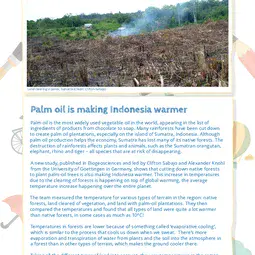
This is a kids' version of the EGU article: 'Palm oil is making Indonesia warmer'. It was written by Bárbara Ferreira (EGU Media and Communications Manager), reviewed for scientific content by Laurel Kluber (Scientist at Novozymes Biologicals, US) and Sara K. McMillan (Assistant Professor, Agricultural and Biological Engineering, Purdue University, US), and for educational content by Abigail Morton (Earth Science Teacher at Woburn Memorial High School, Woburn, Massachusetts, US).
Translations
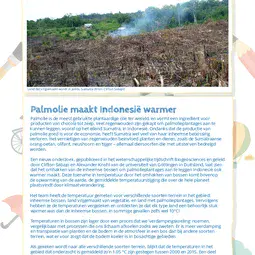
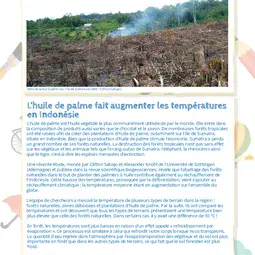
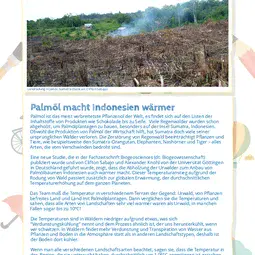
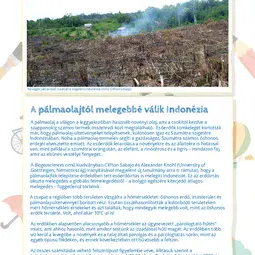
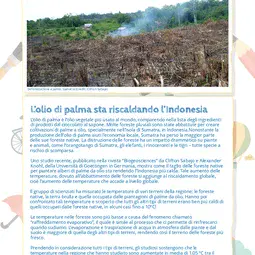
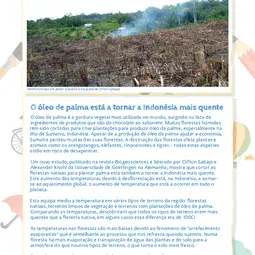
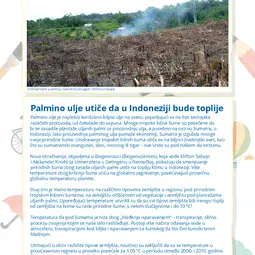
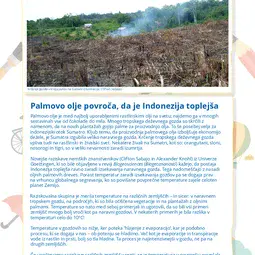
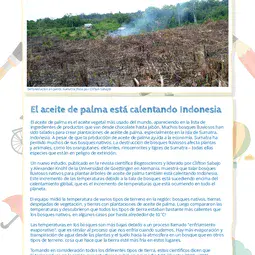
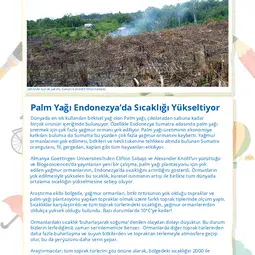
All English-language Planet Press releases are carefully edited, reviewed and proofed, by scientists, educators and EGU staff. Please note that once translated, Planet Press releases receive no further checks from EGU staff. For this reason, we cannot guarantee their accuracy, though we trust the quality of our voluntary translators and are grateful for their work.

